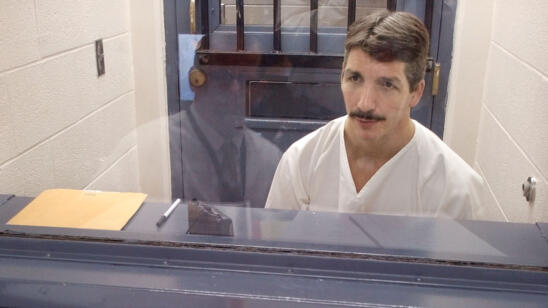Jeffrey Dahmer. Ted Bundy. David Berkowitz. Aside from killing dozens of innocent people (combined), these men—and a significant percentage of other serial killers—have something else in common: Years before turning their rage on human beings, they practiced on animals.
According to the FBI, animal abuse is highly correlated with interpersonal, human-to-human violence. Serial killers often torture or kill small animals from an early age, and men who commit child abuse or domestic violence very frequently harm household pets as well. “If somebody is harming an animal, there is a good chance they’re also hurting a human,” said John Thompson, deputy executive director of the National Sheriff’s Association, in a 2016 interview.
A&E True Crime spoke to Dr. Chris Hensley, associate professor of criminal justice at the University of Tennessee at Chattanooga, for some insight on why these two behaviors are linked—and what we can do about it.
Why do people hurt animals in the first place?
People who harm animals go after someone they perceive as weaker. Many serial killers feel a sense of rejection from their parents or from someone they love; there’s either a perceived rejection or a real rejection. Rather than going after the person who rejected them, they’ll start with something that’s weaker, and often that’s an animal. It’s a matter of power.
[Watch Invisible Monsters: Serial Killers in America in the A&E app.]
At what point does it progress to human beings?
Some research suggests there’s ‘graduation’ hypothesis, where killers start with animals and move to human beings later—and it’s often someone they perceive to be weaker than they are: prostitutes, for example, or hitchhikers, or the elderly.
Other people think that animal and human abuse starts at the same time, which is called ‘generalized deviance theory.’ That’s where a kid might hit another kid and then go home and smack their cat. I think it’s somewhere in the middle, a combination of both [theories].
Your research team asked prison inmates about their experience with animal abuse. What’s the most surprising thing you’ve found?
Finding out that there’s a powerful link between bestiality (sexual relations between a human and an animal) and later interpersonal violence. We don’t know why there’s a connection there—it’s a fairly new area of study and there’s not a lot of literature, but what we know is people who commit bestiality at a young age are significantly more likely to commit interpersonal crime than those who don’t.
[Bestiality] is still rare, of course, but of the people who have committed it, they’re significantly more likely to go on to hurt human beings. Also people that have a method of abusing animals—like strangulation—usually use that same method in hurting human beings. [Serial killer] Henry Lee Lucas, for example, slit the throats of his animal victims as he was sexually abusing them, and then eventually did that with women.
How common is animal abuse? What are some warning signs?
Most studies since 1980 have shown a link between childhood animal cruelty and adult interpersonal violence. We also know that it can be co-concurrent with child abuse or elder abuse. It’s very common in a domestic-violence situation, especially if it’s the victim’s animal.
We’ve seen multiple cases where you have someone engaging in domestic violence that ends up not only killing the person they’re abusing, but then they go back and kill the pets as well. I think it’s because the pet is an extension of [the victim].
In Chattanooga, if you’re in a domestic-violence situation, we have a family-justice center that will allow survivors to stay there and there’s an animal hospital nearby that will board your pets for free.
What else are states or law-enforcement officers doing to keep animals safe?
Tennessee actually became the first state to have a registry—you can go online and look at who in the state has been convicted of animal cruelty, similar to sex-offender registration. Depending on the amount of cruelty, that person is prevented from owning animals. Tennessee is the only state that currently has one, but I know that the FBI is also looking at developing a database as well.
What else could states be doing?
It’s taking a long time for states to really look at the impact that childhood animal cruelty has on later violence. A lot of states have dragged their feet in making animal cruelty a felony, and there are some states that don’t have any laws on the books related to bestiality at all.
Around 2002 and 2003 a lot of states got rid of sodomy statutes, and those states would usually have bestiality underneath that umbrella of sodomy. Those laws became nullified so states had to write their own laws for bestiality specifically, and some haven’t been quick about doing that.
How can we prevent animal abuse before it progresses into interpersonal violence?
To me, treatment is key for children who engage in animal cruelty. Oftentimes parents or caregivers will say “boys will be boys” or turn a blind eye to things, instead of admitting something is really wrong with their child. Most parents know [when] their kids are engaging in this behavior.
We need to say that any form of animal cruelty, with the exception of hunting, should be unacceptable—if you see your kids doing it, that’s a warning sign, and something has to be done. It’s really important to focus on rehabilitation versus locking that person up.
Related Features:
Someone Can Kill Your Pet and Not Go to Jail
Ted Bundy: The Sexiest Serial Killer?
The Shocking Reason Serial Killer David Berkowitz Targeted Women


